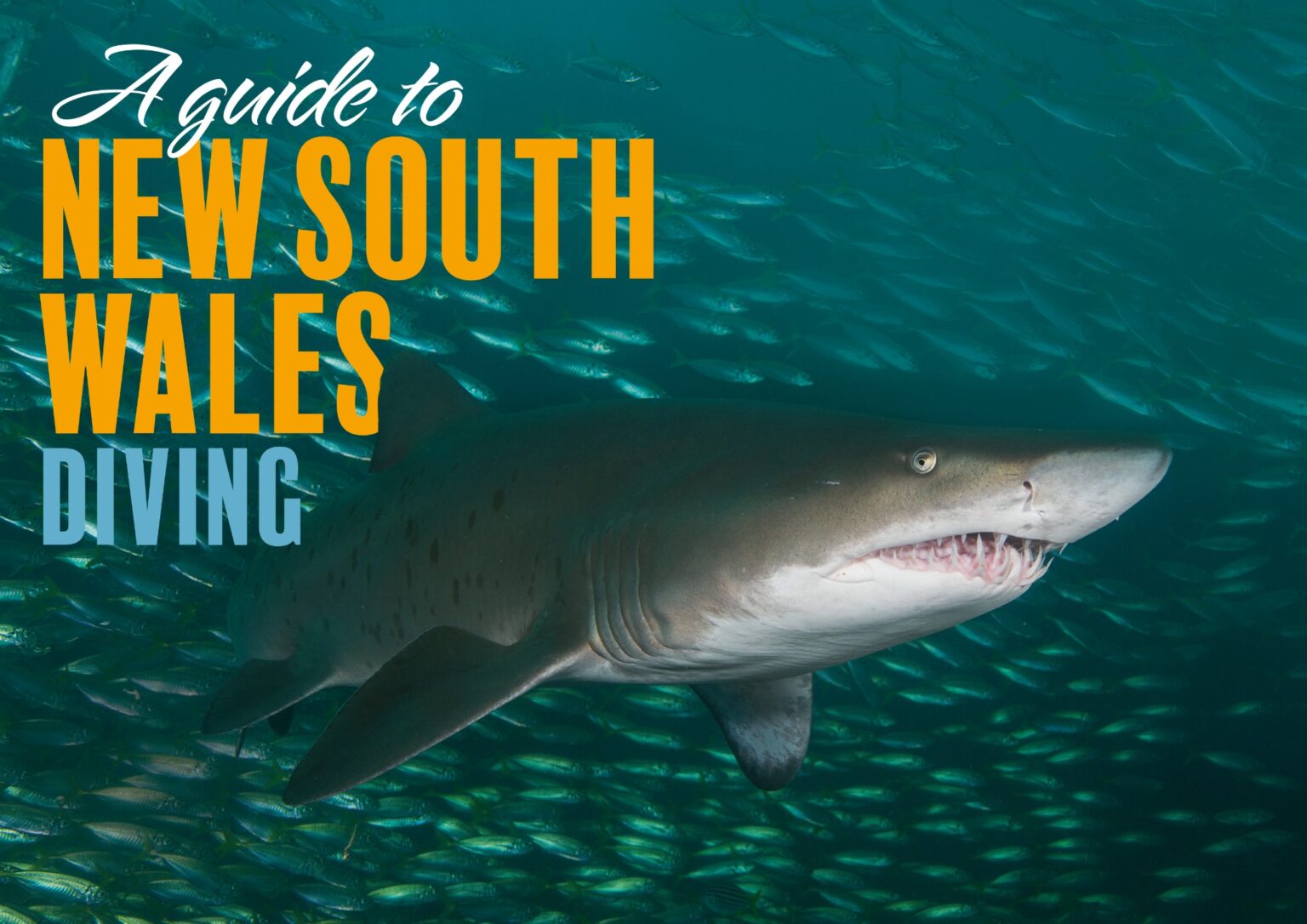Over the coming months, we will delve, State by State, into the magnificent and diverse diving the waters of Australia offer. Australia boasts stunning reefs, kelp forests, a vast array of wrecks, humpback whale migrations, whaleshark aggregations, great white encounters, sea lions, weedy and leafy sea dragons, macro dives galore, a staggering number of endemic species and much, much more. Australia has it all, from thriving tropical warm waters in the north to the abundant cold waters of the south.
Photographs by Jayne Jenkins, Don Silcock and Susan Park.
There are over 892 recorded beaches in New South Wales along a coastline that stretches around 2,000km from Point Danger in the north to Cape Howe in the south. Although NSW is the highest populated coastline in Australia, it still has some of the mostbeautiful beaches and National Parks, including Lord Howe Island, famous for its World Heritage status received in 1982.
The coastline and beaches of NSW vary dramatically, from the long and sweeping sandy beaches to the sandstonedominated cliff-lined beaches and most offering both shore and boat diving.
Diving in NSW is year-round, with water temperature varying from 24/26 degrees C in the summer to around 14/16 degrees C in the winter. Most of the diving is conducted from smaller coastal towns having both boat and shore diving on offer. Sydney, the largest city, and capitol of New South Wales, also has a huge variety of fantastic diving.
To dive NSW there are two major airports for access, Sydney for southern and central regions, and Brisbane in Queensland for some of the northern regions. The East Australian Current – yes, the EAC made famous by Finding Nemo – brings a huge diversity of marine life to the NSW coast line. During the summer months thousands of tropical fish are swept along from the Great Barrier Reef to Sydney Harbour and even further south by the powerful EAC. These accidental visitors arrive around December and stay during the warmer summer months around April. The highlights…
NORTHERN AND CENTRAL NEW SOUTH WALES
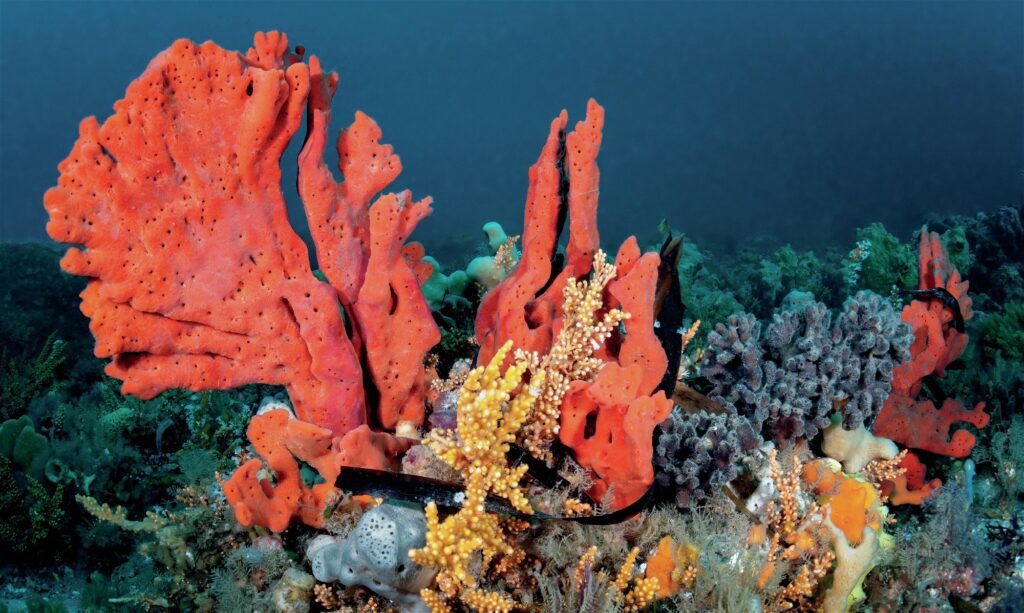
With relatively clear and warmer waters and wrecks, reefs, drop offs plus a variety of marine life the northern and central areas include Byron Bay to Northern Sydney.
Did you know?
Unlike other sharks, grey nurse sharks rely on a swim bladder and a large oily liver to maintain their buoyancy in the water. They surface to take great gulps of air into their stomachs, which allows them to stay buoyant in the water with little effort.
BYRON BAY/BALLINA
The once-quiet ‘hippy’ town is now a thriving township but still with its own uniqueness. There is still the ‘hippy vibe’ and street artists, but also five-star dining and resorts. There is something for everyone, including the beautiful national parks, snorkelling with turtles, bush walking, whale-watching, plus the diving is spectacular at Julian Rocks.
Julian Rocks is within the Cape Byron Marine Park and just 2.5km offshore and home to over 1,000 marine species. There is so much marine life and during December and April, manta rays and leopard sharks call the area home, then between May and November, grey nurse sharks arrive, plus it is humpback whale season.
DIVE SITES
Hugo’s Trench – Depths around this area are about 12-18m. Situated on the southern tip of the island, this is a dive site for both macro and wide-angle photography. There are two parallel trenches and if you love to swim through crevices and gutters, this site is great plus protected if there are currents. Not only is there large marine life here, such as turtles, bull rays and eagle rays, it is excellent for macro life, with an abundance of nudibranchs. You can often spot grey nurse sharks here during May to November.
The Cod Hole – Depth around 15-18m inside then 20-24m just behind. Situated in the northern area of the rocks, probably one of the most-famous dives at Byron Bay. Starting in about 15m around the entrance area, you can swim through schools of kingfish, jewfish and sweetlips. Once inside the Cod Hole (big enough for quite a few divers) there is still so much to see, including schools of bullseyes, wobbegong sharks lazing around, moray eels, cuttlefish and lionfish, and sometimes some big giant Queensland grouper.
These are just a few and my favourites, but there are so many dive sites to experience.
WOOLI, MULLAWAY AND COFFS HARBOUR
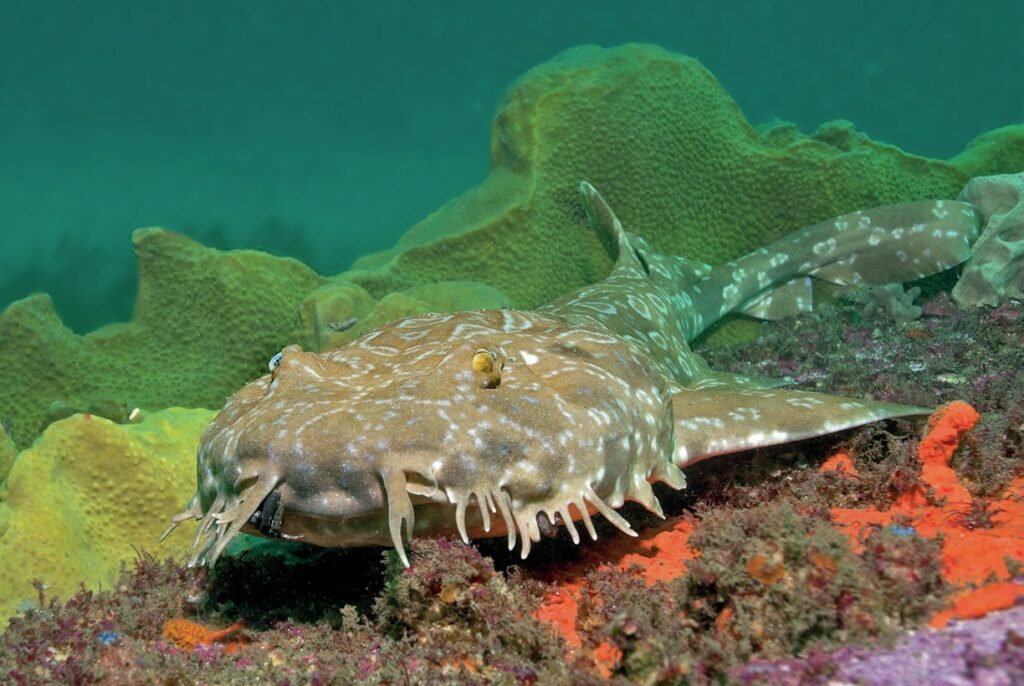
The Solitary Islands Marine Park, established in 1998, is a group of five major islands situated on the north coast of New South Wales. This region including Wooli, Mullaway and Coffs Harbour are gateway to rich and diverse marine life and spectacular diving. Included in the area are North and South Solitary Island and Pimpernel Rock.
Did you know?
Once winter rolls around in NSW, the water temperature cools down, less algae blooms and the winds and currents push cold, clear water closer to the coast, resulting in great visibility.
The most northern area of this group is the tiny town of Wooli set on a narrow three kilometre peninsula, making it practically an island. The ocean plays a huge part of life here as surfing, swimming and fishing are some of the most-popular activities. Solitary Islands Marine Park and Pimpernel Rock are both a short distance away from Wooli.
Mullaway, about 25km north of Coffs Harbour, is a serene seaside area with quiet tree-lined surfing beaches strategically located adjacent the Solitary Islands Marine Park suitable for diving both Pimpernel Rock and North Solitary islands. This outstanding region has bushwalking in National Parks, white water rafting, fishing and surfing for non-divers plus nearby a variety of shops, restaurants, clubs and other facilities are close in the township of Woolgoolga.
Coffs Harbour has so many beautiful beaches within half an hour each side of the town. Coffs Coast region is a great place to get away from it all. Mostly known for ‘The Big Banana’, Australia’s original and most iconic ‘Big’ symbol, I think every tourist visits – the chocolate-covered frozen bananas are delicious.
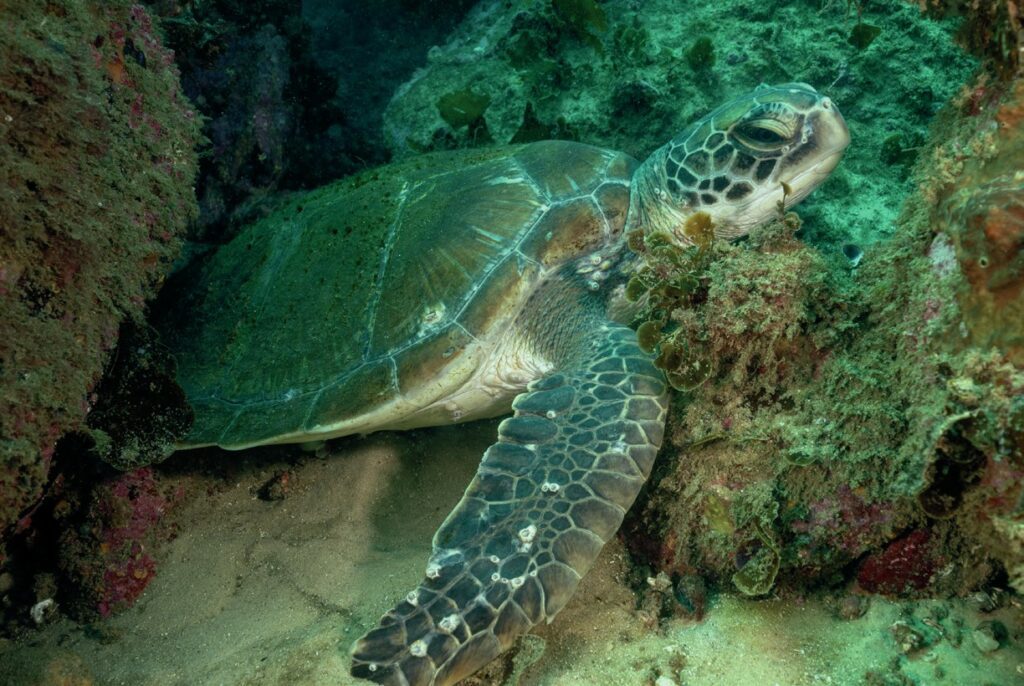
DIVE SITES
Pimpernel Rock – Depths for this dive are about 25-40m. Pimpernel Rock is in the north western part of the islands. This dive is for the more-experienced diver. There are three pinnacles, none of which break the surface and descend to a large swim-through in 40m but then start ascending the pinnacle. The area is pretty with gorgonian fans, sponge gardens and sea whips. Expect to see schools of trevally and kingfish.
Fish Soup – Depth 12-18m. This dive site lives up to its name. If you love dives with fish and swimthroughs, this area is where you will find them. Sweetlips, bream, trevally, morwongs, and trumpetfish gather in this small area with the bonus of friendly blue groper. An exciting dive.
Anemone Bay – Depth 5–24m. One of the most-popular dive sites for divers of all levels and both macro – if you love anemones and clown fish as well as wide-angle photography. The vast array of marine life includes schools of pelagic fish, eagle rays and grey nurse sharks. Turtles cruise over the massive beds of anemones, with lots of colourful corals and tropical fish.
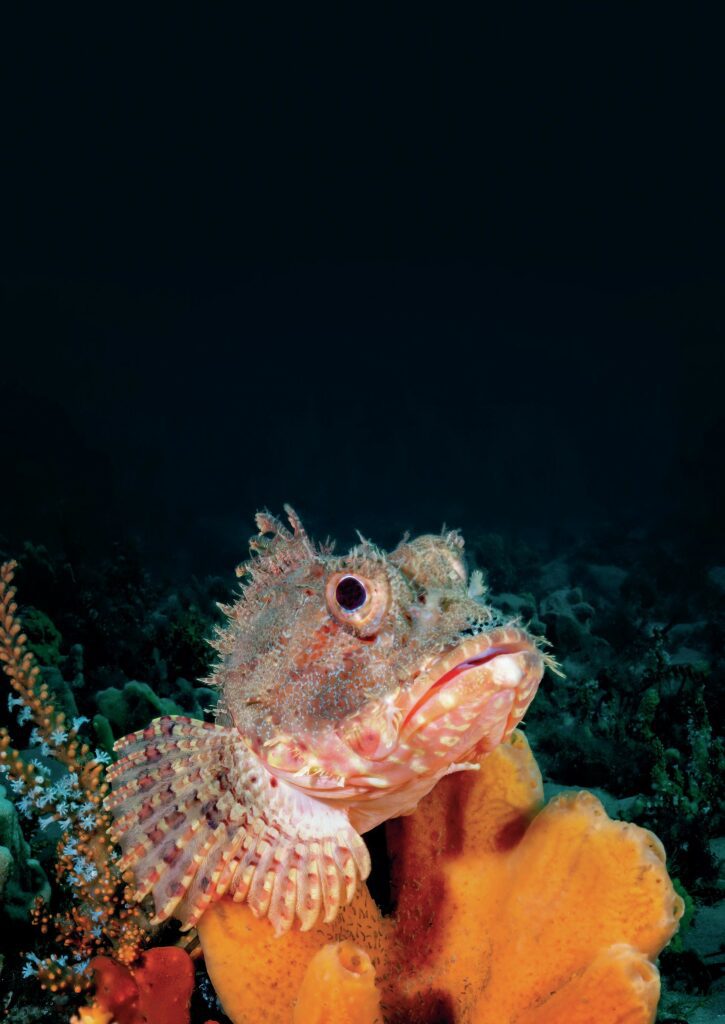
SOUTH WEST ROCKS
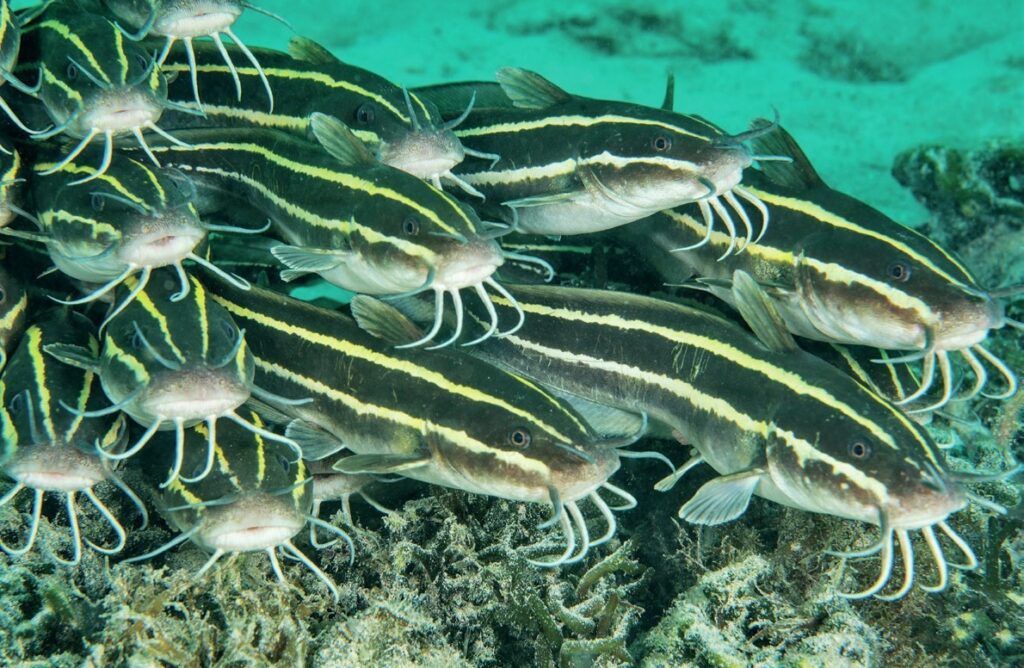
South West Rocks is situated at the mouth of the Macleay River and close to Hat Head National Park. With stunning beaches, coastal trails, and the historical site of Trial Bay Goal, it is a great place to visit. A stay at the Smoky Cape Lighthouse cottages, surrounded by the stunning coastal scenery is a fantastic experience. Diving at South West Rocks is known worldwide for the famous Fish Rock Cave.
DIVE SITE
Fish Rock Cave – Depth 18-24m. Fish Rock is located about 2km off the coast of Smoky Cape. The view of the large rock from the surface is great, but once underwater it is a sensational dive. The cave is the only true ocean cave in Australia and ranges from 12m at the shallow end to 24m at the deep end. Depending on weather is generally how the cave is dived. I love entering from the deep end where the fish life is abundant with wobbegong sharks, black cod and bull rays, plus large groups of bullseyes. When reaching the shallow end, it is a ‘Kodak’ moment for photographers, with the grey nurse sharks cruising slowly in the blue water. It really is a special sight.
LORD HOWE ISLAND
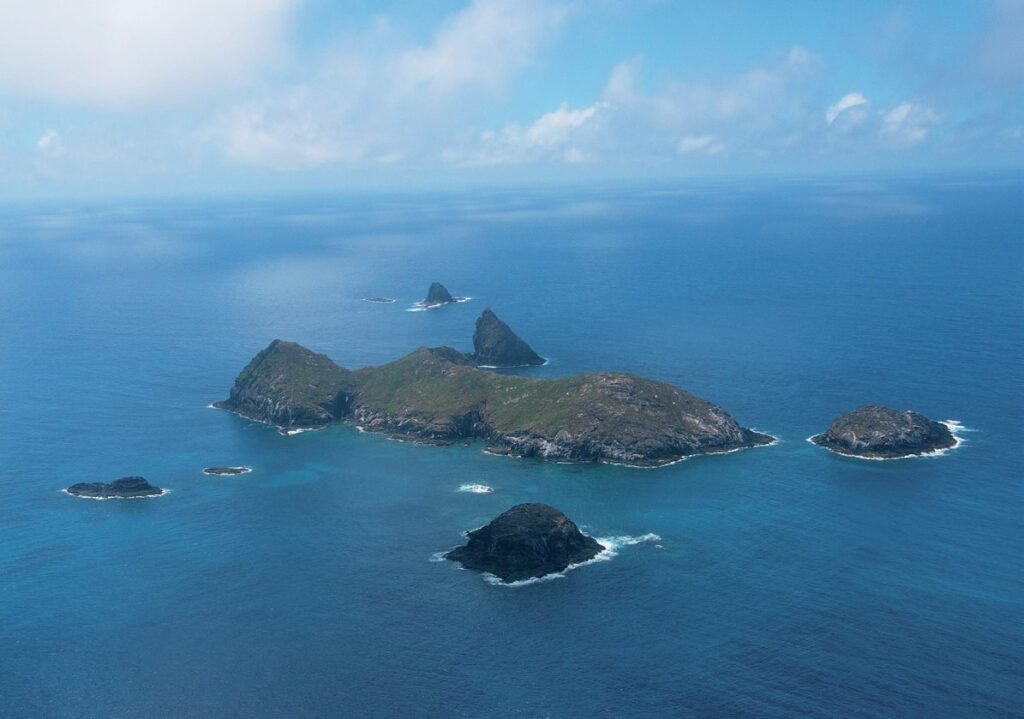
Heading down the coast Lord Howe Island is part of New South Wales but lies 600km directly east of mainland Port Macquarie. Lord Howe Island, one of Australasia’s bestkept secrets is so beautiful and unique that in 1982 it was awarded a World Heritage listing, one of only four such islands in the world. At 31° 33’S, Lord Howe Island has the southernmost coral reefs in the world.
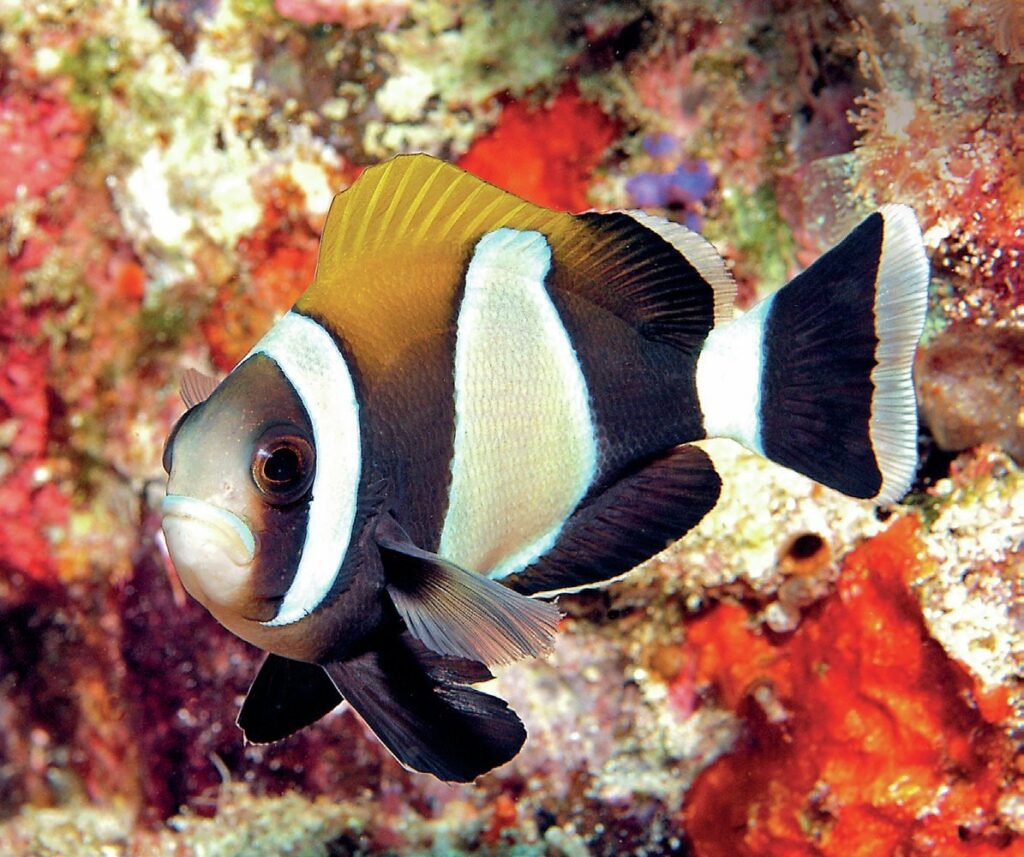
Fed by sea currents from the Great Barrier Reef, New Caledonia, and New Zealand the diving is magical. Often called the ‘Galapagos of Australia’, the uniqueness of Lord Howe is the merging of warm and cold currents providing both tropical and temperate marine life in one area. Driven by the trade winds, the Pacific South Equatorial Current moves westward across the equator.
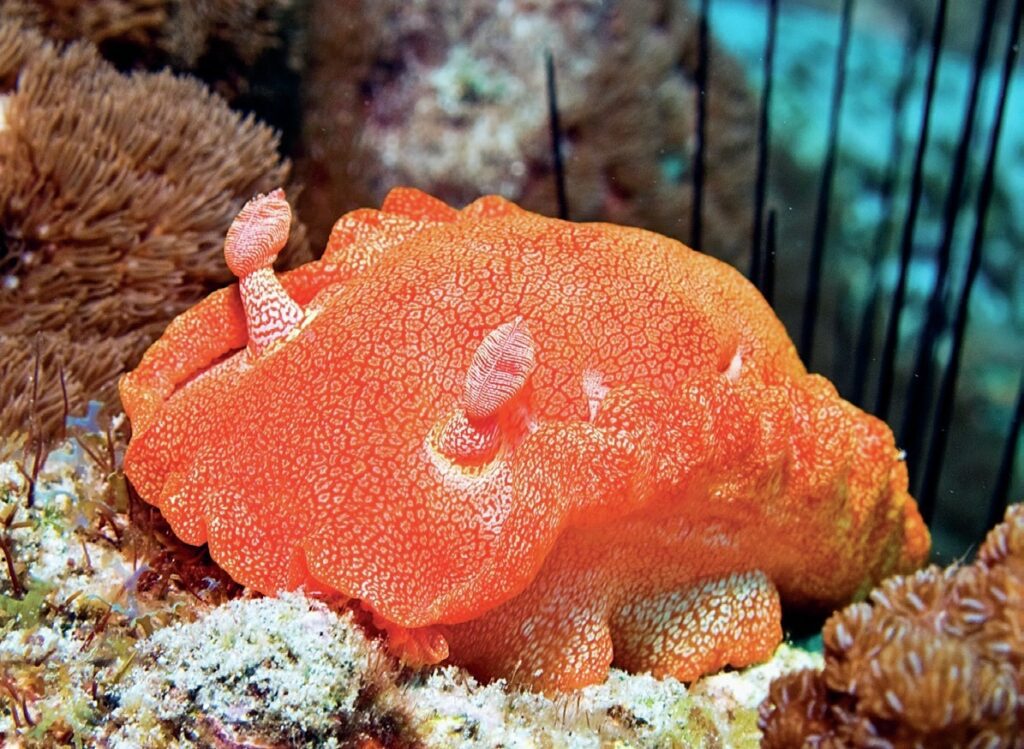
DIVE SITE
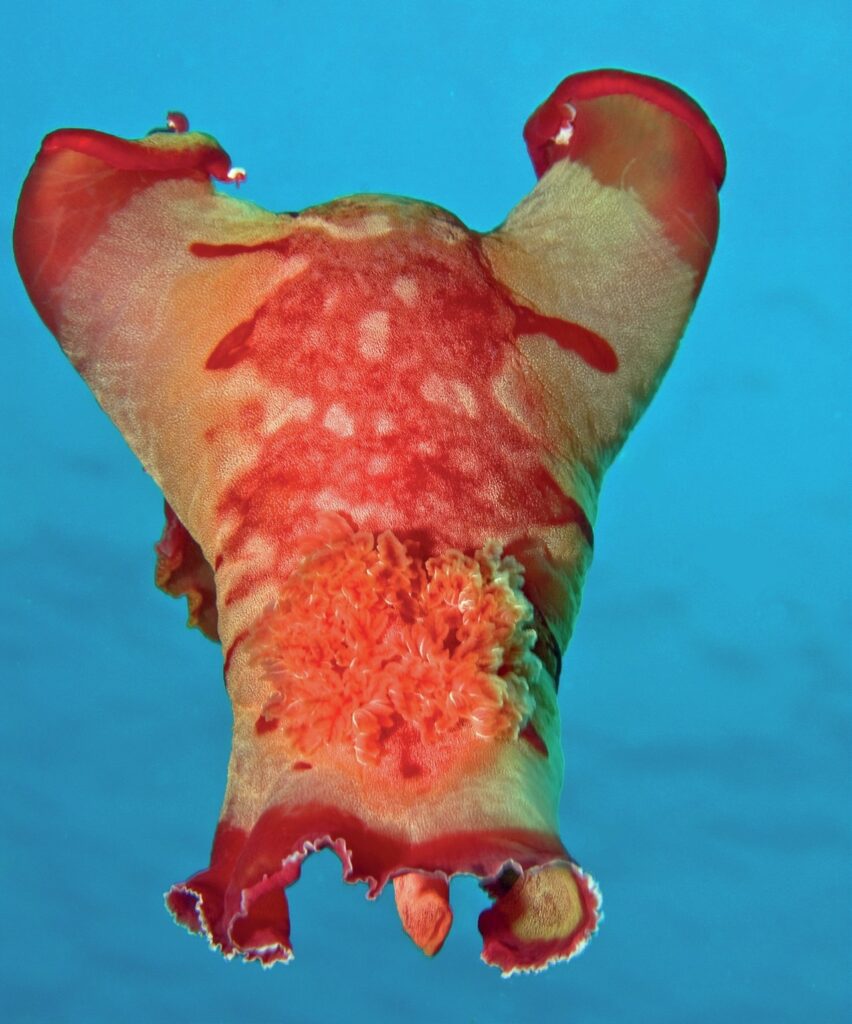
North Rock – This is my favourite dive plus of many divers. Slightly more exposed and can have small swell, it is well worth it. With tunnels and cracks carved through the fringing reef plus a great wall in slightly deeper water, this is where there are black coral trees and beautiful soft corals with plenty of pelagic fish. Galapagos whalers are often seen here along with spangled emperors, sweep, kingfish and trevally. A very exciting dive site.
FORSTER / SEAL ROCKS
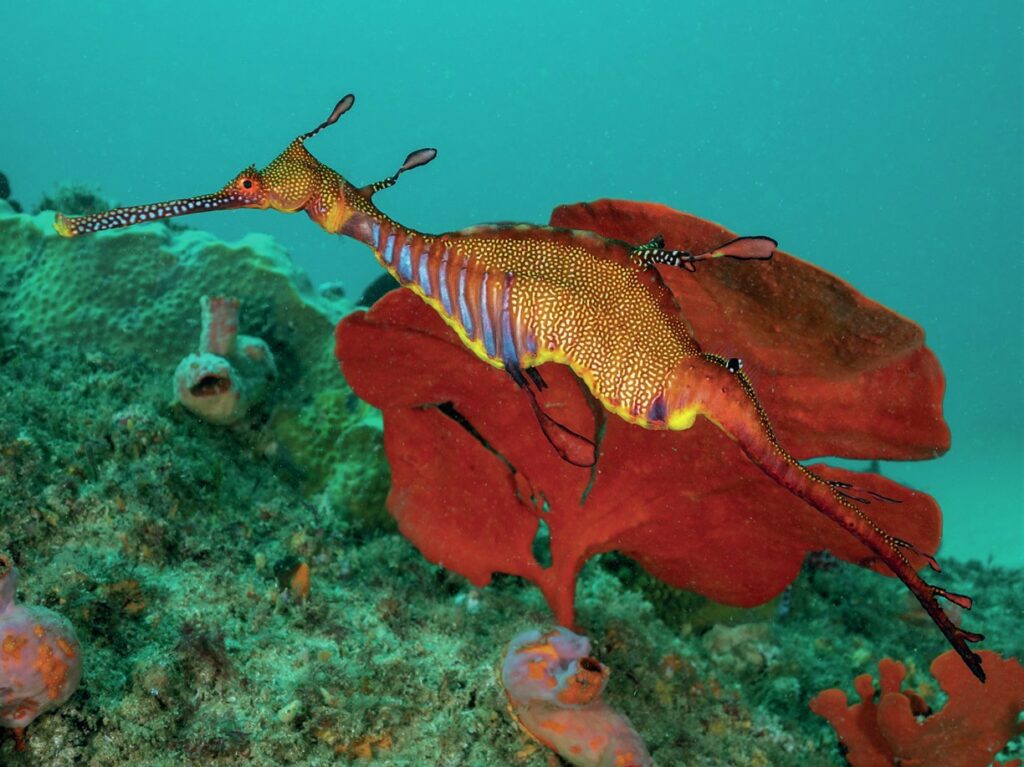
About four hours north of Sydney in the mid-north coast region is the vibrant coastal town of Forster. With miles of beautiful beaches and national parks, Forster is ideal for boating, fishing and surfing, sailboarding and, of course, scuba diving. Just south of Forster is Seal Rocks with its unspoilt beaches and prominent light house on Sugar Loaf Point. You can stay in the lighthouse cottages if you are looking for something extra special.
DIVE SITE
Big Seal – Depth 12-30m. There are several dive sites at Seal Rocks, but Big Seal Rock (a marine sanctuary) is my favourite. During shark season, there can be up to 200 grey nurse sharks in residence. With bommies, gutters and a cave (full of small fish) and all the schooling fish, such as kingfish and mulloway, there is plenty to see around you. On the ocean bed there are lots of wobbegongs lying around and Port Jackson sharks cruising the area.
NELSON BAY
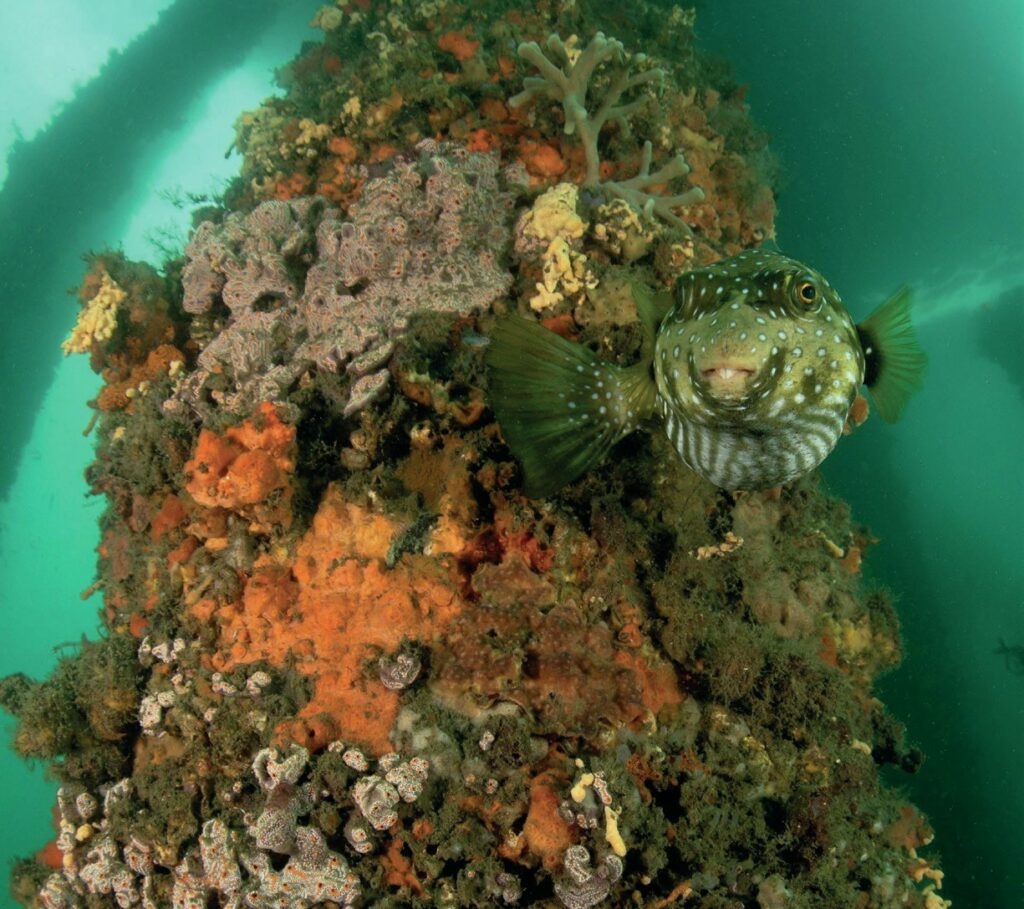
The wonderfully picturesque town of Nelson Bay is located on the southern shore of Port Stephens, about an hour north of Newcastle and some 220km north of Sydney, on the state’s central coast. Port Stephens is a large, drownedvalley, estuary that covers a total area of some 134 km2 – almost 2.5 times larger than Sydney Harbour!
It’s a complex and dynamically biodiverse ecosystem and, from a diving perspective, Nelson Bay is very much the jewel in the crown!
DIVE SITES
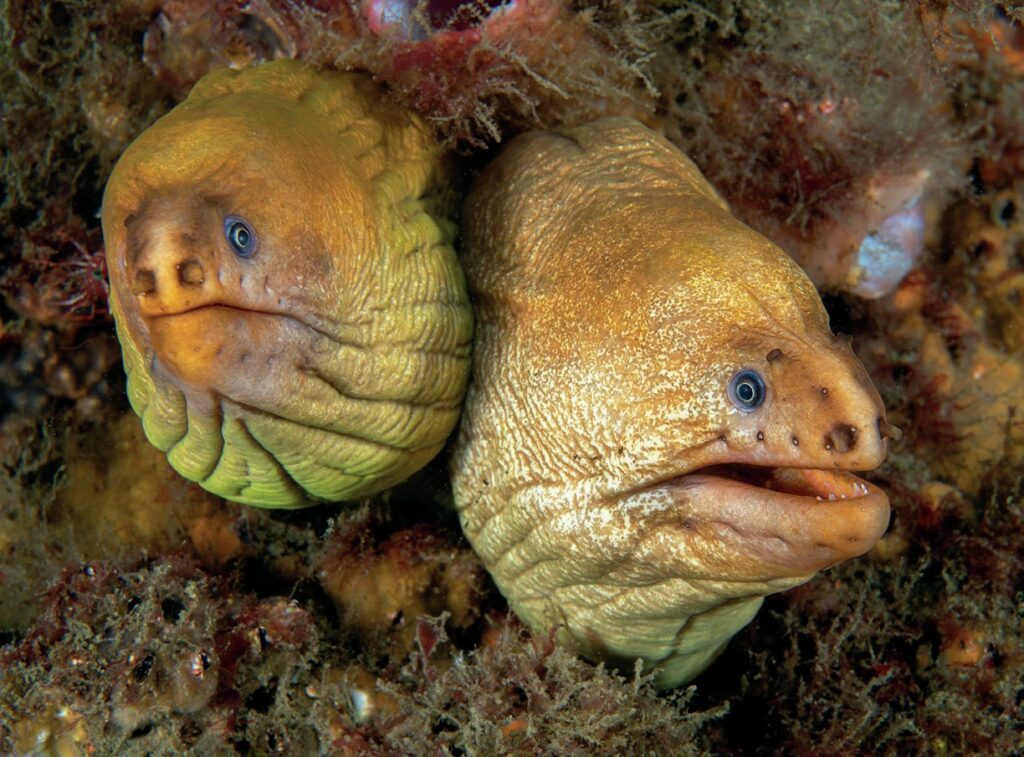
Pipeline – Located near the break wall of the Nelson Bay marina, this site takes its name from the disused former sewerage pipe extending out into Port Stephens. It enjoys a stellar reputation as great place to see a wonderful assortment of nudibranchs, pipefish, seahorses, eels and the occasional weird and wonderful tropical critter! Steps have been provided just to the east of the disused sewer pipe to make entry to the site easy.
Fly Point – Located at the end of Little Nelson Bay, the main area of the site is around the rocky point and again, steps have been provided to allow safe entry. From the steps swim straight north through the shallow kelp until you reach a wall in about 6m of water, turning left along the wall will take you to the tip of the rocky point. On the way there is much to explore in the in the crevices along the wall and just north of those ledges are beautiful sponge gardens rich with critters that are the highlight of Fly Point.
NORAH HEAD / TERRIGAL
Just a short boat ride from the pretty Terrigal Haven lies the ex-naval ship wreck the HMAS Adelaide.
DIVE SITE
HMAS Adelaide – Depth 22-36m. The Adelaide wreck deserves at least three or four dives before you can cover the whole ship. Popular dives are the flight deck and helicopter hanger. Calling this wreck home are numerous wobbegongs, octopus and cuttlefish plus plenty of bullseyes. One of the many reasons divers visit Terrigal is to dive the great wreck.
SYDNEY
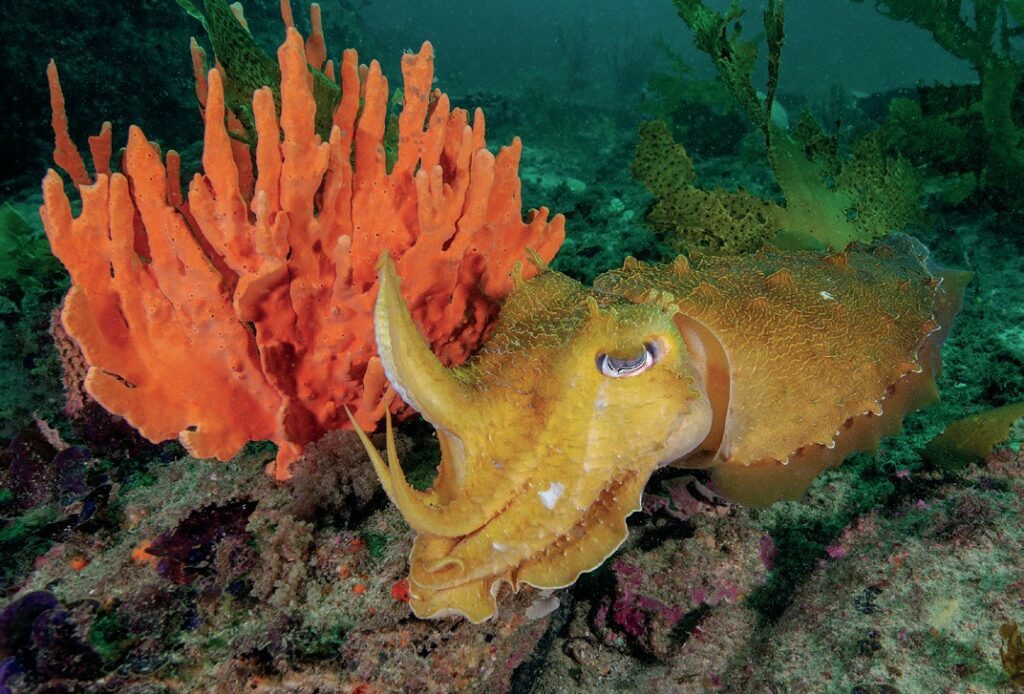
Sydney, capitol of NSW, is a city perfectly in tune with the ocean; there’s more to Sydney than surface appearances suggest. Dive in a bit deeper and you will find Sydney has it all from sea dragons to sharks, pufferfish to penguins plus a few wrecks thrown into the mix.
Sydney, in my humble opinion, is Australia’s, if not the world’s, most breath-taking city both above and below the ocean. What other city has such a stunning harbour with two famous landmarks, the Sydney Harbour Bridge and Sydney Opera House, and easily accessible diving?
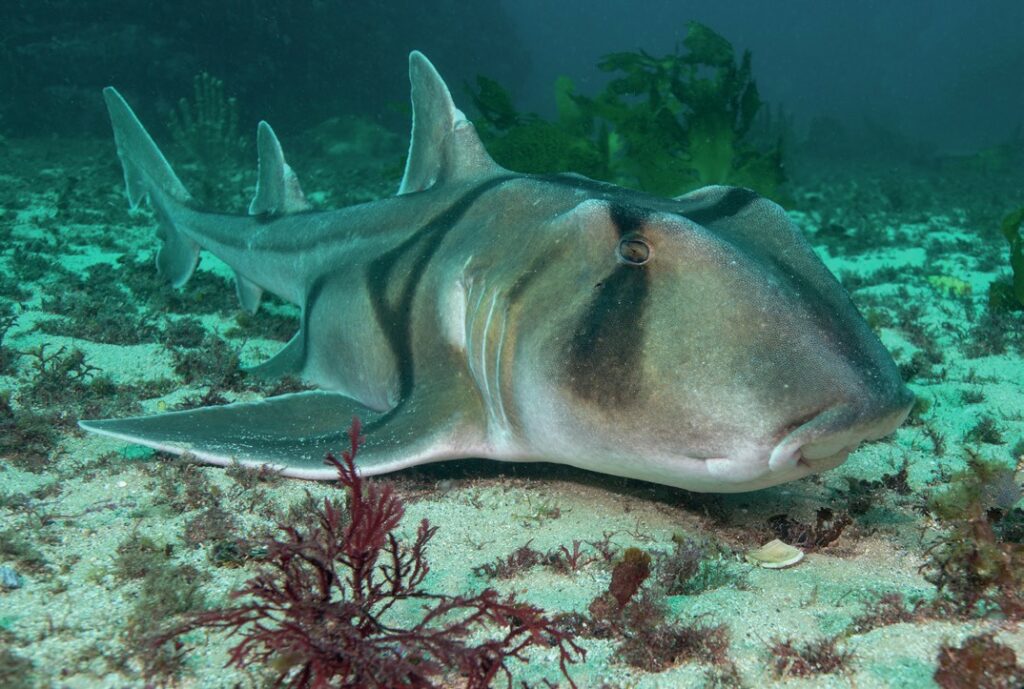
DIVE SITES
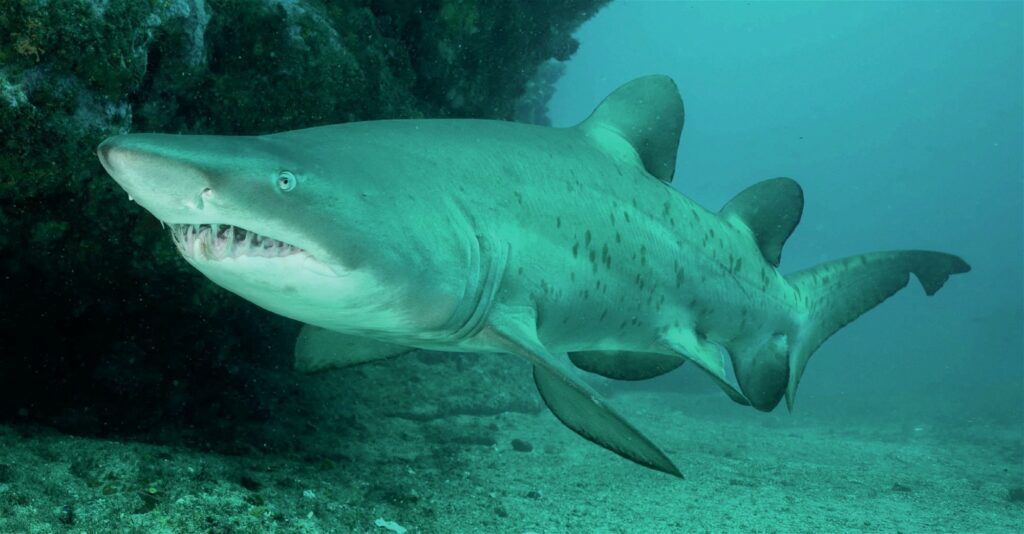
Long Reef – Located off Long Reef Headland, Sydney’s Northern Beaches, Long Reef is probably Sydney’s ‘fishiest’ dive site by far. It is a dive site for all levels of diver as the depth ranges from about 8m–30m depending on where the boat anchors. My favourite area is around the gutters where the grey nurse sharks hang out. As you swim along the gutters the sun may be blocked out by the amount of southern pomfrets swaying back and forth by the hundreds. If you swim along the top of the gutters, you can also see the grey nurse sharks cruising up and down and heading to a bowl-like area where you can view and photograph them quite easily. I personally rate this site as one of Sydney’s best in the Northern beaches area.
Magic Point – A coastal headland off Maroubra south of Sydney, this is probably one of Sydney’s better-known sites south of Sydney Heads. Magic Point is famous for grey nurse sharks and these days as much fish life as Long Reef. The boats generally anchor near a large ledge that drops from 7m to about 16m forming a small cave which has been home to grey nurse sharks for many years. There are two caves so groups can split up. Swimming between the caves wobbegong sharks, Port Jackson sharks, and giant cuttlefish cruise and a local Eastern blue devil fish also calls this site home. If you swim to the sand line and along the kelp it is a great area for spotting weedy sea dragons.
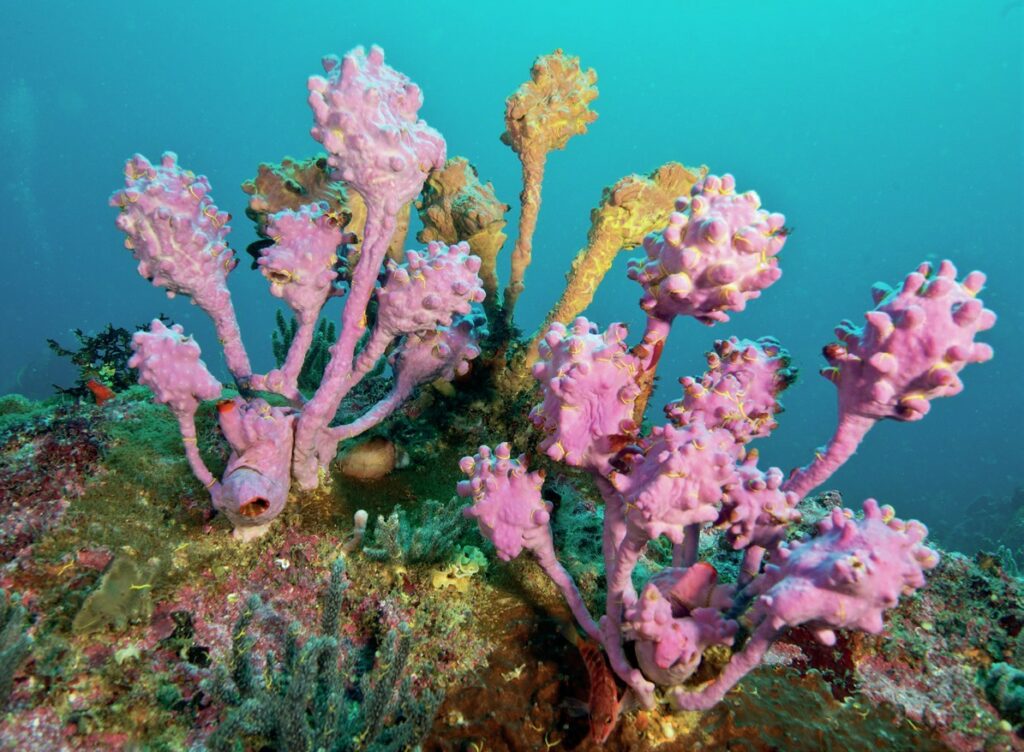
Shelly Beach or Cabbage Tree Bay (north) – On the Sydney’s Northern Beaches, close to Manly, is Cabbage Tree Bay Aquatic Reserve. It stretches from the southern end of Manly Beach past the northern end of Shelly Beach headland covering about 20 hectares. With highlights such as banjo rays, flatheads, weedy sea dragons, dusky whaler sharks, port jackson sharks, wobbegong sharks, giant cuttle fish, turtles and friendly blue groper, it is a fantastic shore dive.
Bare Island (south) – Bare Island is located off La Perouse on the inside of the northern entrance to Botany Bay. It is one of, if not, the most popular dive sites near Sydney.
Accessed from shore via a foot bridge, the island has a variety of fantastic dive sites which are protected from the ocean swell and accessible in most weather conditions except in westerly winds.
It is also one of Sydney’s most-colourful shore dives with sponges, corals and sea tulips covering the island’s walls, rocky shelves and large boulders. Marine life is abundant, with nudibranchs, sea stars, pygmy and mosaic leatherjackets, red Indian fish, weedy sea dragons, frogfish and if you have a guide or good eyesight, pygmy pipehorses hiding out.
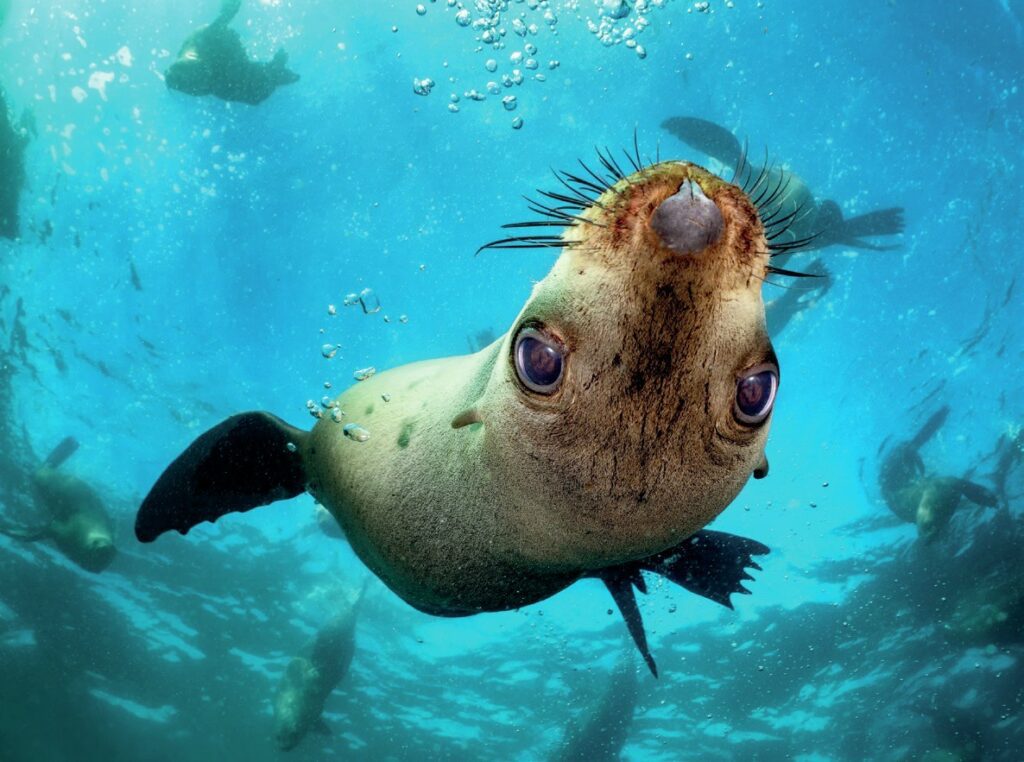
SOUTHERN NEW SOUTH WALES
Called the gateway to the South Coast of New South Wales, Shellharbour is just over an hour’s easy drive south of Sydney.
DIVE SITE
Bushrangers Bay – 12-20m (shore dive). Bushrangers Bay is an aquatic reserve and well protected from most types of weather. Be prepared as it is quite a walk, but the steps are good and well worth the effort once there. I don’t think there are any other shore dives with so many grey nurse sharks.
JERVIS BAY
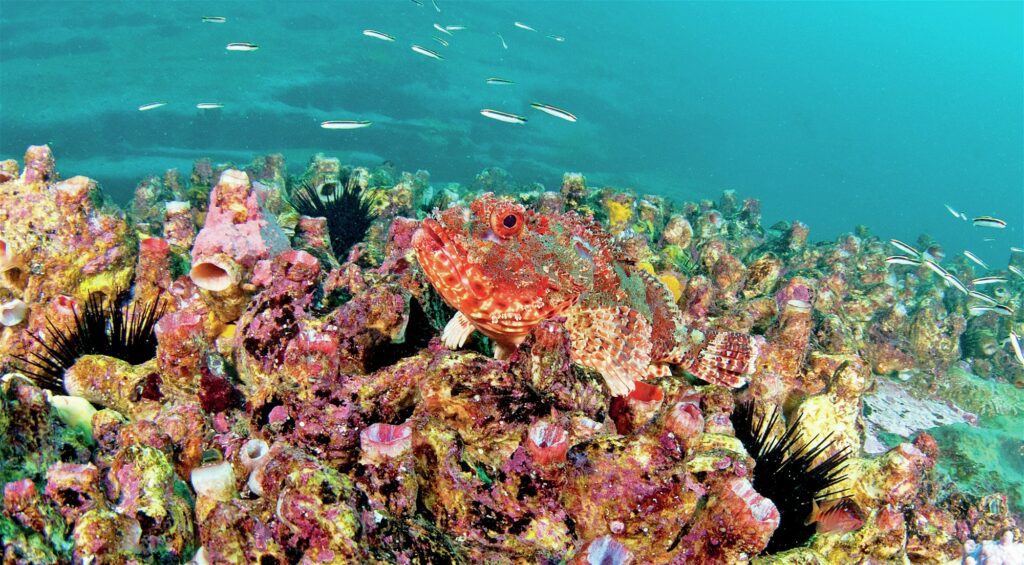
Famous for its clear blue waters and stunning white beaches, Jervis Bay is located just 200km south of Sydney. Covering and area of over 100 km2, Jervis Bay is renowned for its diverse marine life and since 2002 is a formally protected marine park.
There are numerous highlights associated with JB (as it’s often known), not least of which are weedy sea dragons, playful Australian fur seals, incredible but elusive red Indian fish and grey nurse sharks! Jervis Bay is a year-round diving location, although conditions do vary with the weather making exposed sites difficult to access.
DIVE SITES
The Arch – Depth 24m. Generally considered as an advanced dive only accessible by boat, the site is located about 1km off from Point Perpendicular – the bay’s northern headland. Its defining feature is the spectacular underwater arch from which it takes its name, the flat top of which sits at a depth of 24m, with the underside forming an incredible swim-through. The arch is densely covered in jewel anemones and an entourage of colorful fish that call it home. While out in the blue you will often see grey nurse sharks, bull rays and large schools of pelagic fish!
Did you know?
Jervis Bay is a 102-square-kilometre oceanic bay and village on the south coast of New South Wales, Australia, said to possess the whitest sand in the world!
The Docks – depth 20m. Taking its name from two large rock formations that extend out from the coastline, underwater the Docks are a mixture of rich kelp beds, rocky boulders small caverns. Very much a boat dive and with a maximum depth of 20m, the Docks are home to many of Jervis Bay’s highlights, plus much more, and is a site that can be dived many times over as the more you explore there, the more you seem to find!
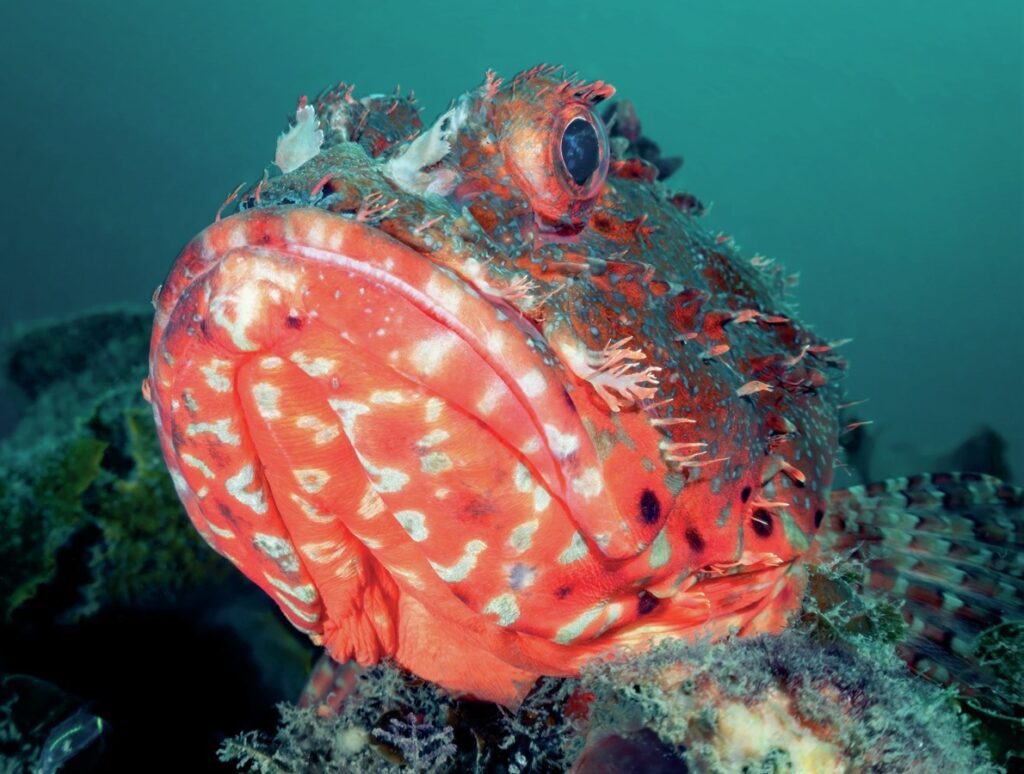
NAROOMA
The wonderfully scenic town of Narooma is located on the banks of the especially picturesque Wagonga Inlet estuary on the south coast of NSW, about 400km from Sydney. Narooma is well-known for its excellent seafood and the rich agricultural produce of the surrounding Eurobodalla region.
From a diving perspective, Narooma is ideally located to get out to Montague Island Nature Reserve some 9km offshore – probably the best place in New South Wales to dive with and photograph Australian and New Zealand fur seals. Plus, in the season, grey nurse sharks and, if you are really lucky, an underwater encounter with the southern humpback whales that migrate up the east coast of Australia to the breeding and calving grounds in Queensland’s Hervey Bay. Montague Island is a year-round diving location, but conditions are very much dependent on the prevailing weather because of its offshore location.
DIVE SITE
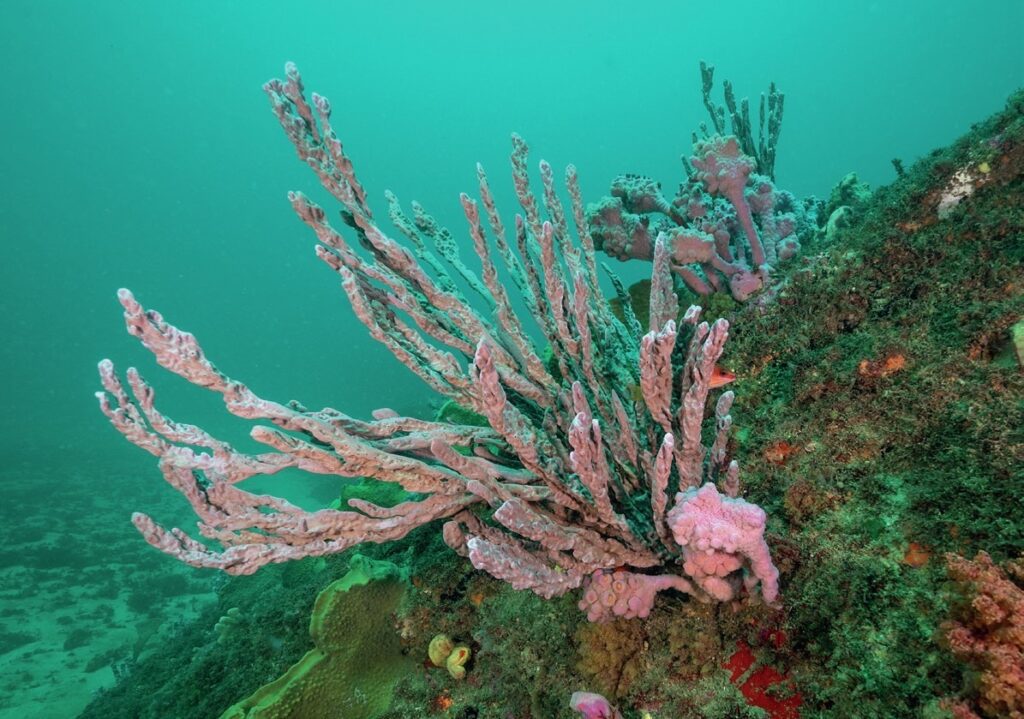
Montague Island – depth 10-26m. Most people go to the nature reserve to snorkel with the seals near their colonies on the islands, but diving with the seals is also allowed and it is quite possibly the most fun you can have underwater!
Naturally inquisitive, both species are natural teasers that always seem able to convince you that you are going to capture the image that will grace the next front of National Geographic – only to turn at the last moment… Typical depths when diving with the seals is less than 10m and so you can really stretch out the air supply! Because it’s a nature reserve, Montague Island is a much-needed safe refuge for the grey nurse sharks that aggregate from November through to April each year to mate and birth. The sharks gather to rest during the day just off the northern point of the island and are typically encountered between 14-26m.
EDEN
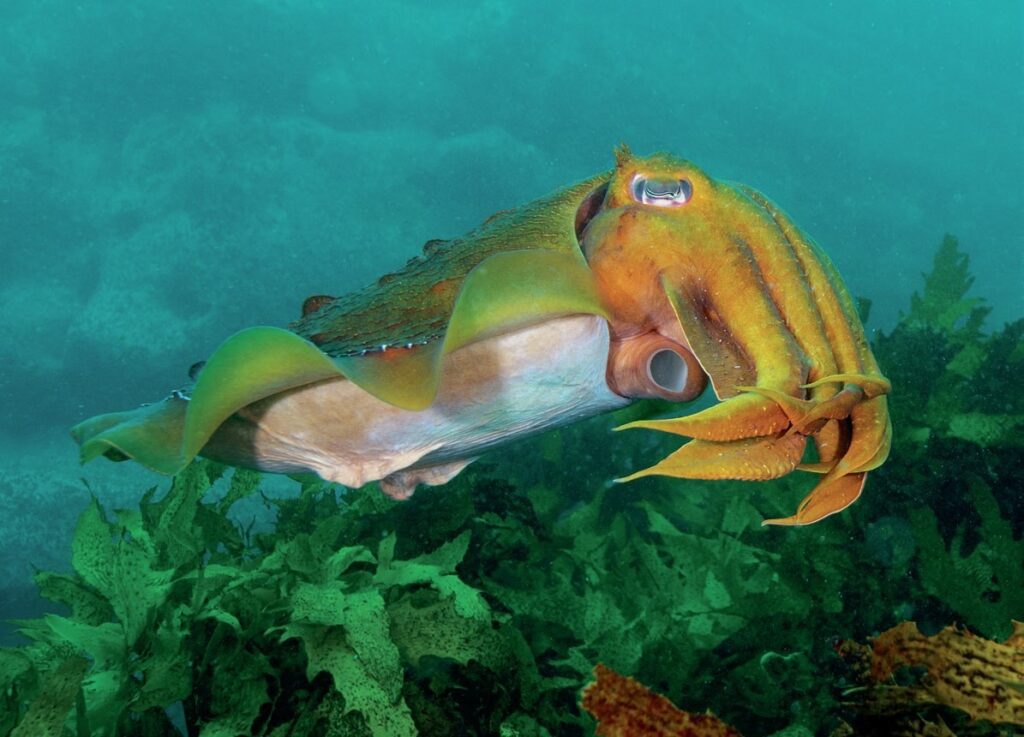
This is the border of NSW and Victoria and the southernmost deep-water harbour in NSW. With a large natural harbour and stunning scenery, cruise ships now call into Eden. It is a fantastic area to get up close and personal and watch the humpback whale migrations.
DIVE SITE
Tasman Hauler – depth 24-31m. Mostly still complete you can explore the bridge, engine room, cabins and the prop is still intact. Great dive for photographers.
NB: These are just some of the highlights that New South Wales has to offer. There are way too many to mention – you will just have to visit and experience it for yourself.
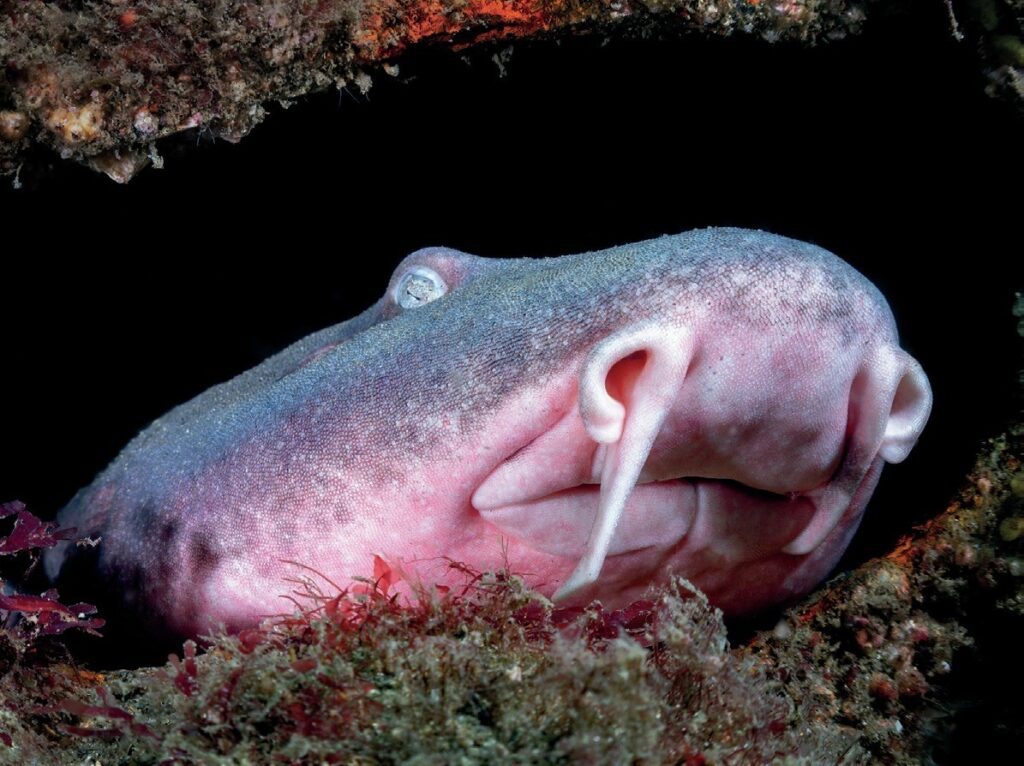
This article was originally published in Scuba Diver ANZ #57.
Subscribe digitally and read more great stories like this from anywhere in the world in a mobile-friendly format. Link to the article
